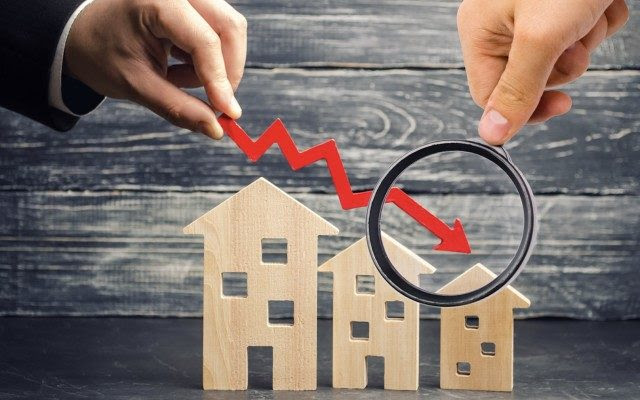Rising interest rates and record prices have caused the market for new homes to plummet. The market collapsed in April in the United States which dissuades many buyers from continuing their search for brand new homes.
The market collapsed by 16.6%, according to Commerce Department data released Tuesday, May 24. This is the lowest level since April 2020, the very beginning of the COVID-19 pandemic.
It is mainly the southern states of the United States that are affected and that recorded the most marked decrease. The magnitude of the decline surprised economists who were expecting 750,000 transactions.
The bad news is piling up and the March data was revised sharply downward to 709,000 against the 763,000 initially announced.
Sales of older homes also declined in April and even fell to their lowest level since the start of the COVID-19 pandemic, the National Federation of American Realtors (NAR) said last week.
The decline in new homes “is pretty scary,” reacted Gregory Daco, chief economist at Ernst and Young Parthenon, noting that it’s a far cry from the million new homes sold in the fall of 2020 when telecommuting Americans were accumulating savings and rushing out to buy larger properties.
“I expected a drop but not such a sharp drop,” Daco told AFP. And since December, this represents a cumulative drop of 30%. “That’s pretty significant.”
On the other hand, the median price continued to rise, to 450,600 USD, as did the average price to 570,300 USD.
And economists are hard-pressed to say whether price declines will follow soon.
“In short, the party is over,” reacted Ian Shepherdson, chief economist at Pantheon Macroeconomics, in a note.
“This suggests that people who previously applied for mortgages are now choosing not to proceed with a purchase,” he added.
For Gregory Daco, “the main conclusion is that monetary policy is working in the sense that the central bank’s communication has had an impact on long-term rates including mortgage rates.”
He explains that investors have anticipated the rate increase and “have already incorporated future monetary policy into their estimation.” “As a result, mortgage borrowing is much higher than the Fed’s rate hike.”
The Federal Reserve raised interest rates by a quarter percentage point in March and then by half a point in May to contain the highest inflation in four decades.
The goal is also to cool a boiling housing market.
In a sign of a very tight and troubled market, for months potential buyers have been bidding against sellers’ asking prices to have a chance of getting a property.
And the market has become unaffordable for first-time buyers.
Oren Klachkin, the chief U.S. economist at Oxford Economics, said that because income gains will not keep up with rising borrowing costs and home prices, the decline in sales could continue in the coming months.
The drop in sales has swelled the inventory of available properties to nine months in April from 6.9 months in March, according to government data.
Klachkin also believes that “builders will increase housing inventory, but not enough to significantly shift housing market dynamics in favour of buyers.”
Eventually, if the decline in demand were to continue, housing construction could also decline. This would lead to a slowdown in housing-related retail sales such as building materials, appliances and furnishings.



Comment here